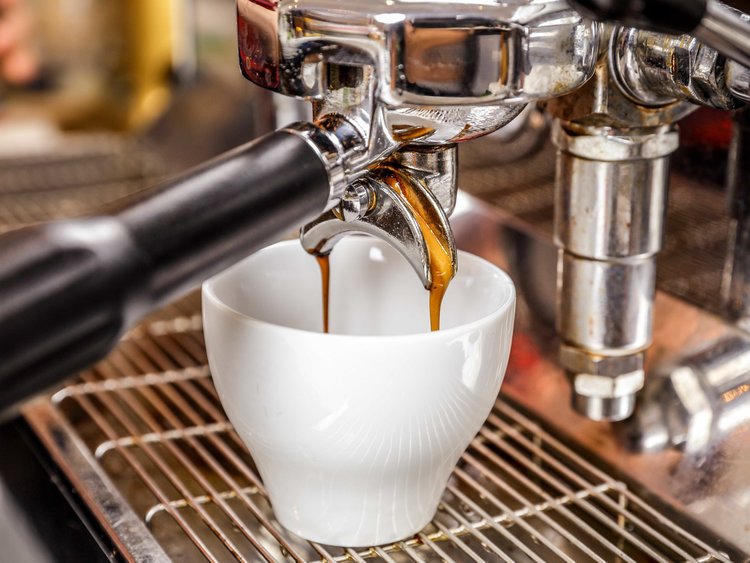How hard does it take to extract Italian concentration to press the powder? What will be caused by the different intensity of powder pressing on extraction?
The powder press (or powder hammer) is one of the most commonly used tools in espresso. The main purpose is to flatten and tamp the coffee powder in the handle to form a flat horizontal plane, to better let the hot water be extracted through the coffee powder, and to make the coffee powder withstand the great pressure caused by the coffee machine extraction. without being washed away and impressing the quality of the extraction.
The force of the pressing powder should be determined according to the grinding thickness of the coffee powder, and the reference basis is the flow rate of coffee during extraction (extraction time 25 ±3 seconds). If the flow rate is too fast, the powder pressing strength is too light; if the flow rate is too slow, the powder pressure is too heavy, which will directly affect the Italian concentrated product and the taste of the coffee. In addition, everyone's application strength will be different, and there is a great difference between boys and girls, so it is necessary to adjust the corresponding strength according to the actual extraction effect.
According to the state of the Espresso production process, we can judge whether the powder pressing strength is appropriate. If the coffee flows quickly and runs out of 30cc in less than 20 seconds, then the strength of the pressing powder should be insufficient (the prerequisite is that other influencing factors have been ruled out, and the powder is evenly distributed) then the strength of the pressing powder should be increased appropriately to make the coffee pressed powder denser. If the coffee flow rate is very slow, with a rotating trend into the cup, has not extracted 30cc for more than 30 seconds, then the powder force is too large (the premise is that other factors have been ruled out, cloth powder, uniform powder level), then try to reduce the powder strength.
There is also a situation that is more obvious when using double-cup bowls. Coffee production is relatively smooth, coffee flow is smooth, and is relatively fine flow down, the extraction of 30cc coffee amount of time is slightly longer (more than 30 seconds), then according to the above basically no problem. However, when you take off the handle and observe, you will find that there is still a lot of water on pressed powder, indicating that the current with a force equivalent to nine atmospheric pressure does not pass smoothly through pressed powder. At this time, when you taste the coffee, you will find it is thin and sharp. In the case of grinding degree, smooth and uniform pressing powder and no problem with powder distribution and other factors, it is a question of powder pressing strength. Strong powder pressing will cause there are still traces of water on pressed powder.

Important Notice :
前街咖啡 FrontStreet Coffee has moved to new addredd:
FrontStreet Coffee Address: 315,Donghua East Road,GuangZhou
Tel:020 38364473
- Prev

What is the difference of coffee flavor between aerobic fermentation and anaerobic fermentation
The red wine treatment, also known as controlled fermentation, or lactic acid / acetic acid fermentation, is led by Felipe Sardi, an American, and is made up of biological scientists and ecologists. Acetic acid fermentation aerobic fermentation (cleaner
- Next

Baristas take stock of 8 "strange requirements" common in coffee shops! Do guests really know anything about coffee?
Professional coffee knowledge exchange more coffee bean information Please pay attention to the coffee workshop (Wechat official account cafe_style) more and more people drink coffee, and more and more coffee shops are opened, but not every customer knows the difference between each kind of coffee. There was a heated discussion yesterday when baristas who worked in coffee shops shared requests from strangers they had met on social platforms. The barista said that sometimes he listened
Related
- Beginners will see the "Coffee pull flower" guide!
- What is the difference between ice blog purified milk and ordinary milk coffee?
- Why is the Philippines the largest producer of crops in Liberia?
- For coffee extraction, should the fine powder be retained?
- How does extracted espresso fill pressed powder? How much strength does it take to press the powder?
- How to make jasmine cold extract coffee? Is the jasmine + latte good?
- Will this little toy really make the coffee taste better? How does Lily Drip affect coffee extraction?
- Will the action of slapping the filter cup also affect coffee extraction?
- What's the difference between powder-to-water ratio and powder-to-liquid ratio?
- What is the Ethiopian local species? What does it have to do with Heirloom native species?

